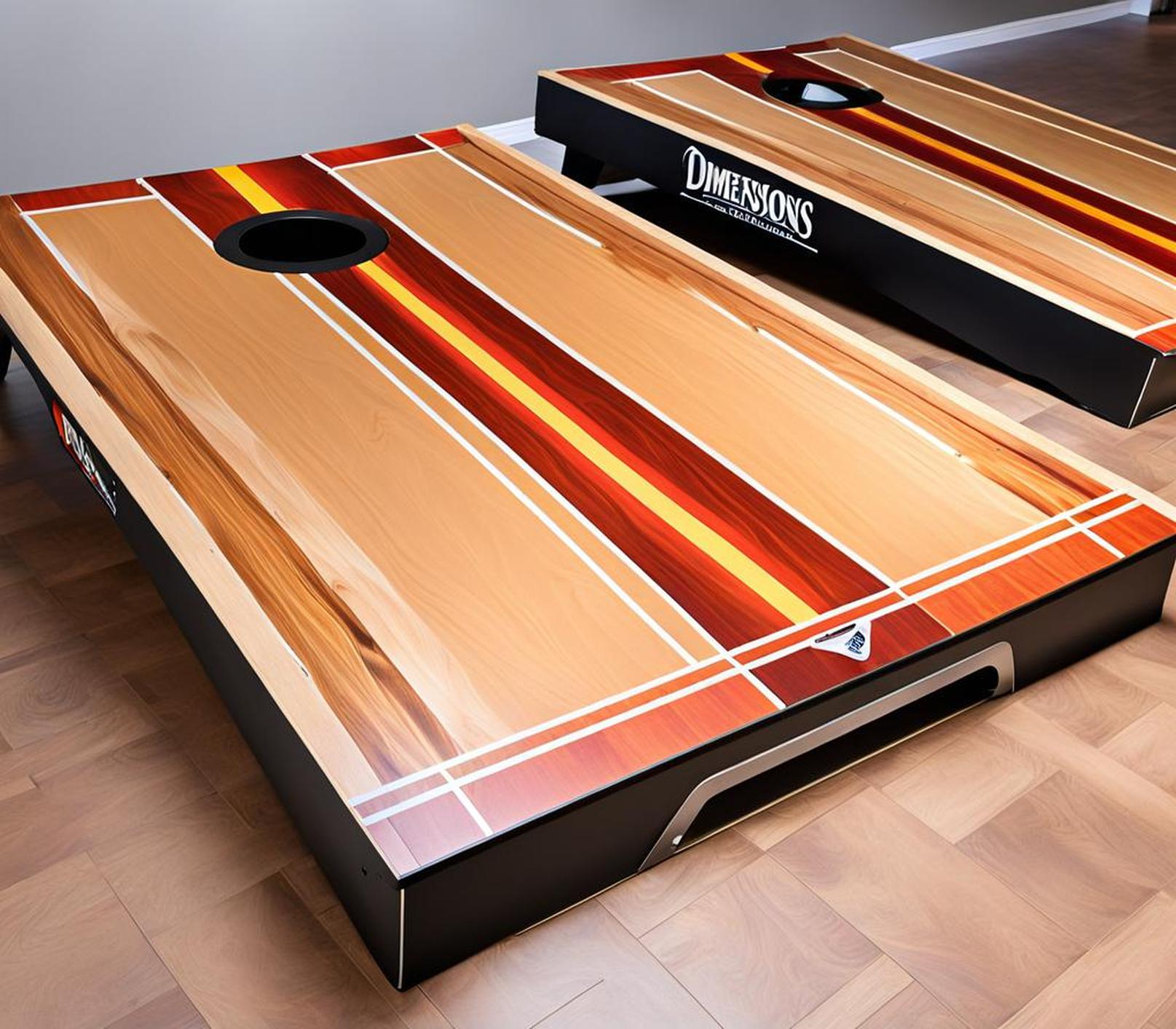Cornhole, also known as corn toss, bean bag toss, or bags, has exploded in popularity over the last decade. This classic lawn game is easy to learn but takes skill to master. With official tournaments gaining traction, it’s important to know the standard cornhole board dimensions and specifications.
Whether you’re looking to build your own set for the backyard or want to compete on the cornhole circuit, following the official dimensions is key.
Official Cornhole Board Width and Length
According to the American Cornhole Association, cornhole boards should measure 48 inches long by 24 inches wide. A width between 47.5 and 48 inches and a length between 23.5 and 24 inches is acceptable.
This slim 4 foot by 2 foot rectangular shape makes the boards easy to transport and store. The compact size also allows players of all ages and abilities to play. Cornhole would be far more difficult on a larger board!
Choosing the Ideal Materials
Cornhole boards must be constructed of plywood or other rigid hardwood materials. The wood should be 1/2 to 3/4 inches thick to provide a sturdy, durable surface.

Oak, maple, birch, and poplar are all great plywood choices as they are smooth, dense woods. Pine is lightweight but may dent easily. Avoid particle board as it lacks strength.
For a regulation board, the material should weigh at least 25 pounds to stay put during play. Heavier boards around 30-40 pounds have superior stability.
Getting the Leg Height Right
The front edge of a regulation cornhole board sits 3-4 inches off the ground. Meanwhile, the back edge is usually around 11-12 inches high.
This angle allows bags to slide and stay on the board instead of falling straight to the ground. The slope gives players a better chance of landing bags in the hole.
Sizing and Placing the Cornhole Hole
Ah yes, the hole. This 6 inch diameter cutout is centered 9 inches from the top of cornhole boards. It must also be equidistant from each side edge.
This strategic hole placement gives bags the maximum possible trajectory into the target. Players can slide bags straight in from the front or pitch them from the side.
| Hole Diameter | 6 inches |
| Hole to Top Edge | 9 inches |
| Hole to Side Edge | Centered evenly |
Cutting the Hole Accurately
Use a jigsaw with a 6 inch hole cutting blade to cut the hole. Clamp a block to the board as a cutting guide. Take it slowly to avoid splintering.
Clean up the hole’s edges with sandpaper. Round over the edge so bags slide smoothly.
A drill bushing lined up with marks 9 inches from the top and edges is an easy way to center the hole accurately.
Standard Cornhole Court Dimensions
During tournament play, cornhole boards are set facing each other 12 feet apart (front edge to front edge). That leaves plenty of room for players to take turns pitching from the pitcher’s boxes.
These 4 foot x 3 foot pitcher’s boxes are placed on both sides of each board. Players must stay inside the box while pitching.
Perpendicular foul lines extend 3 feet beyond the front edges of the boards. Bags landing beyond the foul line are fouls and removed from play.
Tournament and Indoor Adjustments
For major tournaments with over 32 teams, boards can be spaced 16 feet apart. The pitcher’s boxes may extend to 4 feet wide to fit more players.
When playing indoors, the boards can be squeezed as close as 8 feet together. The pitcher’s boxes and foul lines are shrunk proportionally to fit the space.
Constructing Your Own Cornhole Boards
Building your own cornhole set from scratch takes some handy skills, but is very rewarding. Here are the basic steps:
- Cut plywood sheets to the 48″ x 24″ regulation size.
- Use a jigsaw to cut the 6″ diameter hole centered 9″ from the top.
- Attach folded bracket legs or build a solid wooden base.
- Apply polyurethane for a slick, smooth surface finish.
- Add paint, stencils, or designs (optional).
Allow the finish to fully cure before playing. Add rubber pads to the bottom of the legs to prevent sliding.
Buying Complete Cornhole Sets
You can skip the DIY work and purchase finished cornhole sets. These are available through many major retailers. There are also sellers on Etsy and Amazon that offer custom designs.
Pre-made regulation boards guarantee you’ll have the correct sizing for game play and tournaments. Just be sure to verify dimensions before ordering!
Now that you’re up to speed on the official cornhole board dimensions, it’s time to start practicing your pitching skills. Good form, gentle tosses, and smart aim will have you nailing bags in the hole in no time.
Remember to follow the standard cornhole specifications if you decide to build your own boards. This ensures fairness during backyard games and adheres to tournament regulations.
Before you know it, you’ll be a lean, mean cornhole pitching machine. May your bags fly straight and true! Game on!
